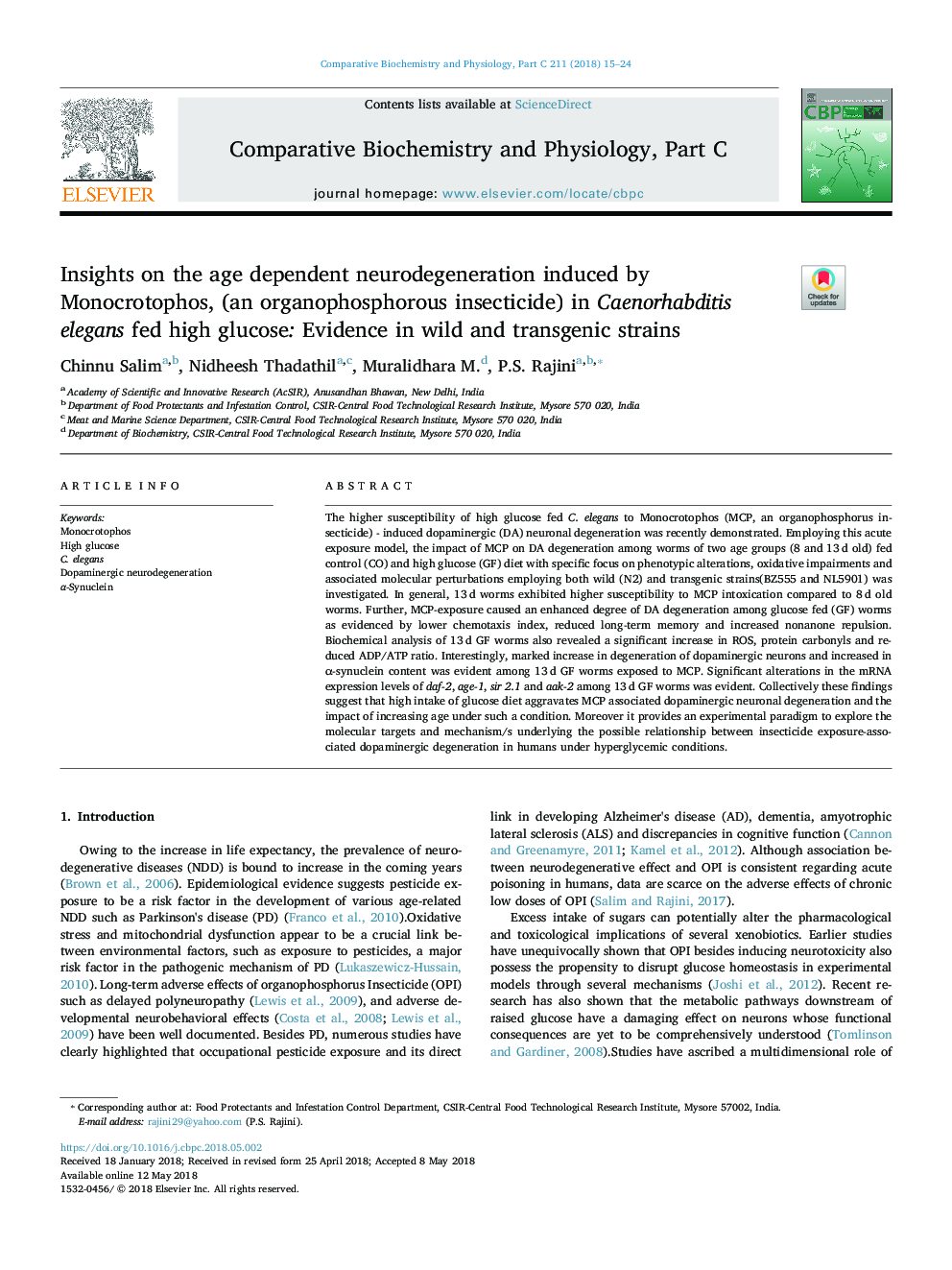| Article ID | Journal | Published Year | Pages | File Type |
|---|---|---|---|---|
| 8318965 | Comparative Biochemistry and Physiology Part C: Toxicology & Pharmacology | 2018 | 10 Pages |
Abstract
The higher susceptibility of high glucose fed C. elegans to Monocrotophos (MCP, an organophosphorus insecticide) - induced dopaminergic (DA) neuronal degeneration was recently demonstrated. Employing this acute exposure model, the impact of MCP on DA degeneration among worms of two age groups (8 and 13â¯d old) fed control (CO) and high glucose (GF) diet with specific focus on phenotypic alterations, oxidative impairments and associated molecular perturbations employing both wild (N2) and transgenic strains(BZ555 and NL5901) was investigated. In general, 13â¯d worms exhibited higher susceptibility to MCP intoxication compared to 8â¯d old worms. Further, MCP-exposure caused an enhanced degree of DA degeneration among glucose fed (GF) worms as evidenced by lower chemotaxis index, reduced long-term memory and increased nonanone repulsion. Biochemical analysis of 13â¯d GF worms also revealed a significant increase in ROS, protein carbonyls and reduced ADP/ATP ratio. Interestingly, marked increase in degeneration of dopaminergic neurons and increased in α-synuclein content was evident among 13â¯d GF worms exposed to MCP. Significant alterations in the mRNA expression levels of daf-2, age-1, sir 2.1 and aak-2 among 13â¯d GF worms was evident. Collectively these findings suggest that high intake of glucose diet aggravates MCP associated dopaminergic neuronal degeneration and the impact of increasing age under such a condition. Moreover it provides an experimental paradigm to explore the molecular targets and mechanism/s underlying the possible relationship between insecticide exposure-associated dopaminergic degeneration in humans under hyperglycemic conditions.
Related Topics
Life Sciences
Biochemistry, Genetics and Molecular Biology
Biochemistry
Authors
Chinnu Salim, Nidheesh Thadathil, Muralidhara M., P.S. Rajini,
